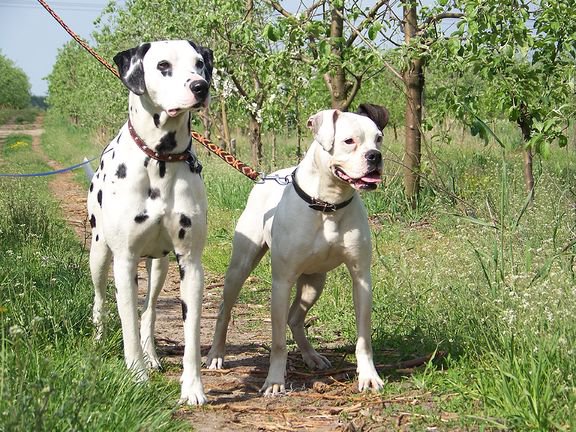One breed kennel vs. Multibreeds kennel
– the differences between both of them. Which one is better?
I felt the need to say something about differences between one breed kennels and mutibreeds kennels. And “multi” it’s mean – “more than one breed” here. 😉
Ya know, today I remembered what I was thinking about multibreeds kennels when I was sixteen. At that time whole my cynology knowledge I took from web forums. Ye ye… web forums are not a good source of knowledge, I know now. But when I was teenage that was my first steps in cynology world. But now, after 10 years from my first dog show I feel that I have to say something more about dog kennels. And it’ll be sound completly different than this which you can read on web forums. 😉
For one thing – on web forums you can read that only the “one breed kennels” are a good kennels. They said, that every breeder who have more than one kind of dog breed in his kennel it’s a bad guy who just wanna make money on dogs. They said also that only the “one breed breeder” truly know and love his dogs. Gosh, I really believed on this piece of shit!
The truth is – the more breeders you know, the further from this claims you are.
One breed breeders love their dogs, for sure. The other hand when we thinking about really big dogs kennel, with many many dogs, we should be more cautious, right. But if a breeders focus on just one breed, how their really know what’s canis lupus f. familiaris mean?
Canis lupus f. familiaris is a species of incredible morphological differences (the largest among all species on Earth!) but equally important is how this different characters and instincts can be manifested by representatives of various dogs breeds.
Everything is a matter of to what purpose the dog breed was created.
For e.g. :
When we needed independently working dogs, who alone shall pursue the aim of killing the hare (and not necessarily give back it in one piece) – we bred greyhounds.
When we needed a hell jammed dog who wouldn’t hesitate to go even to the cramped fox burrow, deep underground, there to fight with him (often referring serious injuries) – we bred legions of terriers and dachshunds.
When we needed tractive force, we redirected desire chasing prey in tow passion – we bred the sled dog breeds like siberian husky for e.g.
When we needed a dog to brings networks and arrows from the water or to retrieved a shot fowl (or just scared them) – we bred dogs of water breeds (like Portuguese and Spanish Water Dog or Poodle), lots of retrievers and spaniels.
When we needed non-electrical version of “anti thief” – we bred a guard dog breeds. It was the role of all molossers (so it’s mean the Boxers too) and part of the shepherds (the truth is that molossers are a kind of shepherds).
I could give you more and more examples for a long time, because the FCI (Fédération Cynologique Internationale – eng. World Canine Organization) divided the dog breeds into ten groups, and each of this group is further divided into specific sections of breeds, precisely because of differences in dogs instincts and morphology.

Greyhounds and mastiff by Sawrey Gilpin Poster
So now you see, that having a greyhound and having a mastiff or having a hunting dog and having a Boxer it’s a little bit like having two completely different species at home.
And that’s why a ” one fair breed ” breeders imagine that all dogs are like their loved breed. And perhaps for this reason often densely minor disagreements arise between the breeders themselves.
I don’t wanna say that every good breeder should have different breeds under his roof. But even if they’re interesting about other breeds is in my eyes a plus. Paradoxically, the broader knowledge about the different breeds of dogs give the closely knowledge about the breed you have.
So, for a better understanding of the Canis lupus f. familiaris in general you have to know more about all of dog breeds.
Cause all of them are creating the species that we call “A Dog”.
And remember – something else is a normal Dalmatian and another a normal boxer. 😉
